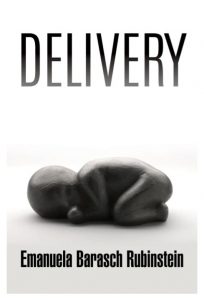“…a very profound novel, polished and complex. It is practically impossible to put it down until the very end. Barasch Rubinstein is an extraordinary writer…” Review in Chi Tarbut
Delivery, by Emanuela Barasch Rubinstein, launches today, and we have posted an excerpt from her original article on War and Peace and Birth, where she points out how rarely birth is depicted in fiction. We publish the opening extract here, and invite you to read the full article on Emanuela’s own blog OnOurselvesAndOthers :
The renowned poet and cultural critic Matthew Arnold, who is widely regarded as the father of modern literary critique, famously stated: “a work of Tolstoy is not a piece of art but a piece of life.” His novels reveal a viscerally realistic worldview, aiming to depict the essence of the human condition in an accurate and authentic manner. Tolstoy once noted: “the one thing necessary in life, as in art, it to tell the truth. Truth is my hero.”
War and Peace, the masterpiece published in 1869, depicts Russia when it was invaded by Napoleon. In addition to the main protagonists, Natasha, Pierre and Prince Andrew, Tolstoy presents a variety of supporting characters, each of whom is layered and fascinating. The reader learns about Russian society, which is described in a very realistic manner.
It is evident that the novel is an outstanding literary pinnacle – as well as the first modern literary work to realistically depict giving birth. Various works of art portray children’s arrival into the world, but not many of them give insights into the process of giving birth itself. From antiquity to the modern age, artists have chosen not to elucidate the baby’s arrival into the world. Literary fiction portrays various ruthless painful events, which are not very appealing (wounds and illnesses, beheading and other forms of death), but the feminine experience of extracting one body from another tends to get undermined.
Tolstoy, an author fully attentive to the experience of the individual, depicts the first birth in War and Peace. Although the narrator is not present in the delivery room, he maintains the focus on giving birth. Lisa, also referred to as “the little princess”, is Prince Andrew’s wife. She is portrayed as a young and naïve woman with a juvenile beauty. She wishes no harm, but her frivolous nature stands in contrast to that of Andrew. He leaves his pregnant wife to join the battle against Napoleon. Everyone believes Andrew has died in the battle of Austerlitz. His father and sister decide to conceal his death from his wife who is nine months pregnant – but he returns home unexpectedly right before the delivery.
Even before Lisa’s husband appears, the princess is portrayed as follows: “And besides the pallor and the physical suffering on the little princess’ face, an expression of childish fear of the inevitable pain showed itself.” And then “the little princess began to cry capriciously like a suffering child and to wring her little hands with some affection.”
This description palpably evokes mixed feelings. On the one hand, Tolstoy has unequivocally affirmed that Lisa isn’t crying because of an immediate pain but because she presciently knows that she is about to experience profound suffering. The fear of giving birth is therefore acknowledged as a common feminine phenomenon, which is self-evident in my opinion. On the other hand, fear is still portrayed as capricious and childish.
As the midwife arrives Andrew’s sister tells her, “with eyes wide-open with alarm,” that the birth had begun, to which the midwife replies “You young ladies should not know anything about it.” Here again, Tolstoy acknowledges young women’s fear of giving birth, which is not typical of a single character. Furthermore, the author suggests there is a systematic attempt to conceal the pain and anguish associated with the process of giving birth from young women, perhaps because they might avoid it altogether. In 1959, Simone de Beauvoir argued in her book The Second Sex that women are subjected to myriad psychological manipulations to have children, in order to serve the larger purpose of maintaining masculine superiority. Eighty years earlier, Tolstoy portrays how young women, who had never had children, are intentionally kept away from a woman giving birth.
Andrew returns home unexpectedly and rushes to his wife’s room. The excruciating pain and excitement make her oblivious to his sudden appearance. From this point onward, she is portrayed in a rather extraordinary manner. “’I love you and had done no harm to anyone; why must I suffer so? Help me!’ her look seemed to say.” Her husband tries to assuage her but then again, her expression conveys it all: …Continue reading
Delivery launches today and is available from Holland House Books
Waterstones, Hive, Wordery, Amazon and all good bookshops!

